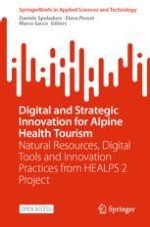This open access book presents a set of practical tools and collaborative solutions in multi-disciplinary settings to foster the Alpine Space health tourism industry’s innovation and competitiveness. The proposed solutions emerge as the result of the synergy among health, environment, tourism, digital, policy and strategy professionals. The approach underlines the pivotal role of a sustainable and ecomedical use of Alpine natural resources for health tourism destinations, and highlights the need of integrating aspects of natural resources’ healing effects, a shared knowledge of Alpine assets through digital solutions, and frames strategic approaches for the long-term development of the sector.
The volume exploits the results of the three-years long EU research project HEALPS 2, which involved several stakeholders from the health tourism, healthcare and sustainable tourism industries. This book is relevant for health tourism destinations and facilities (hotels, clinics, wellness and spa companies), regional and local authorities (policy makers), business support organizations, researchers involved in digital healthcare and geoinformatics.
